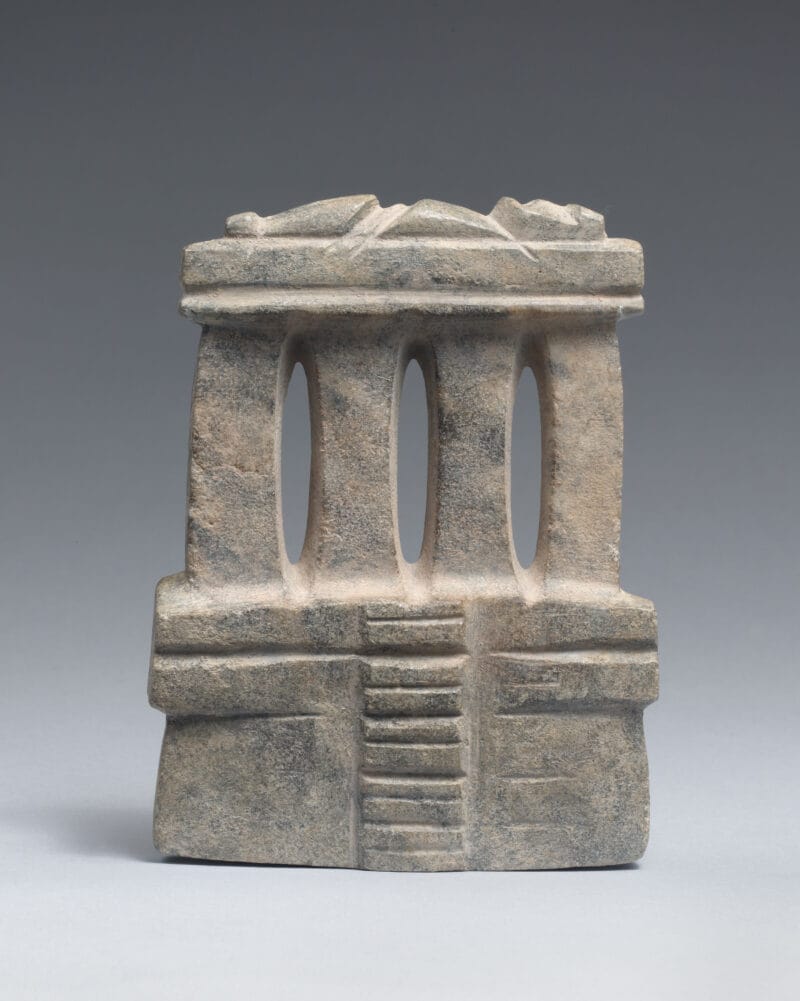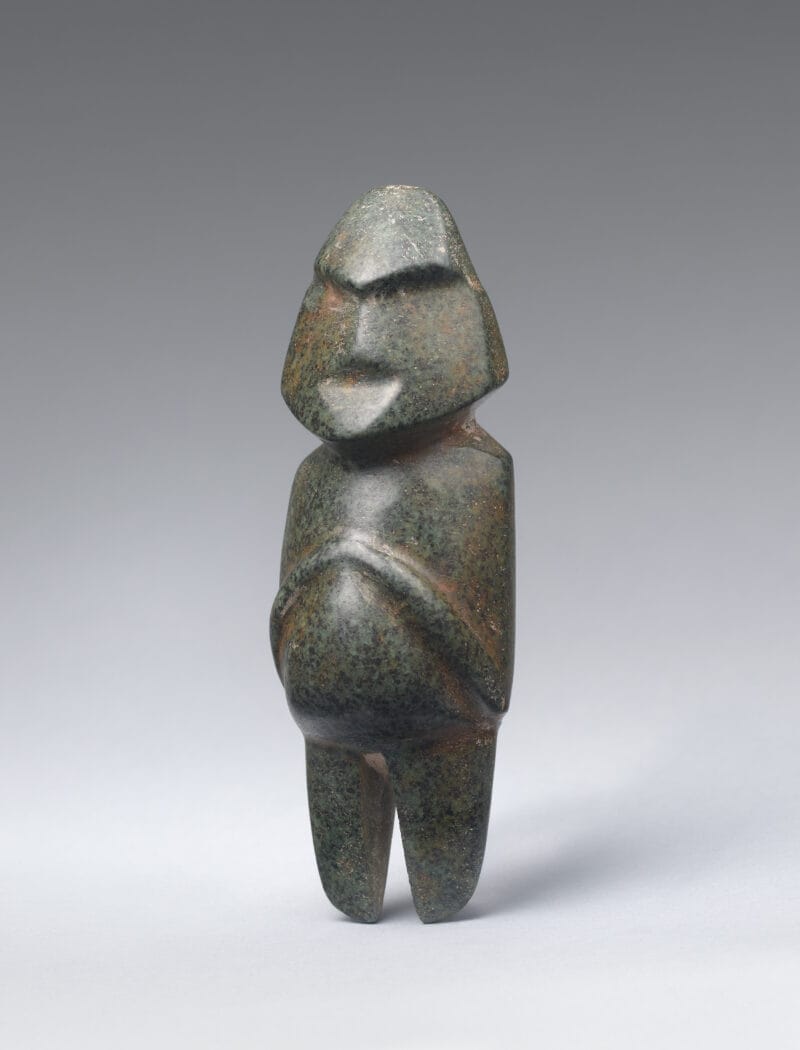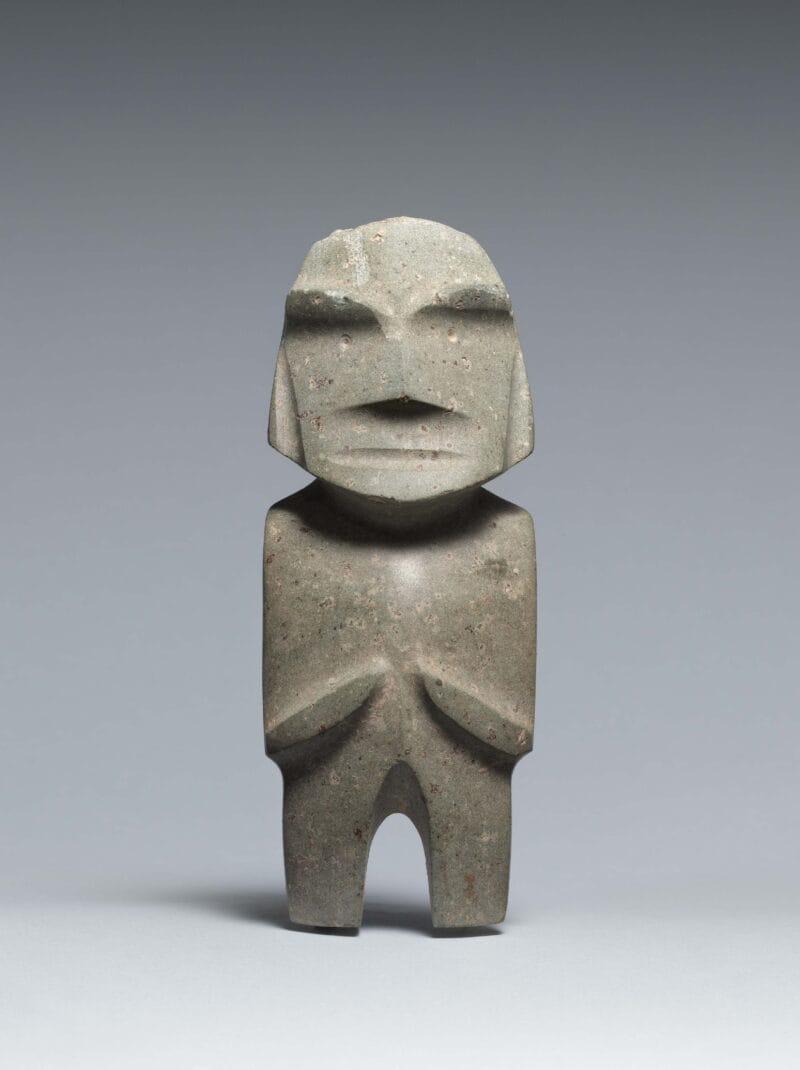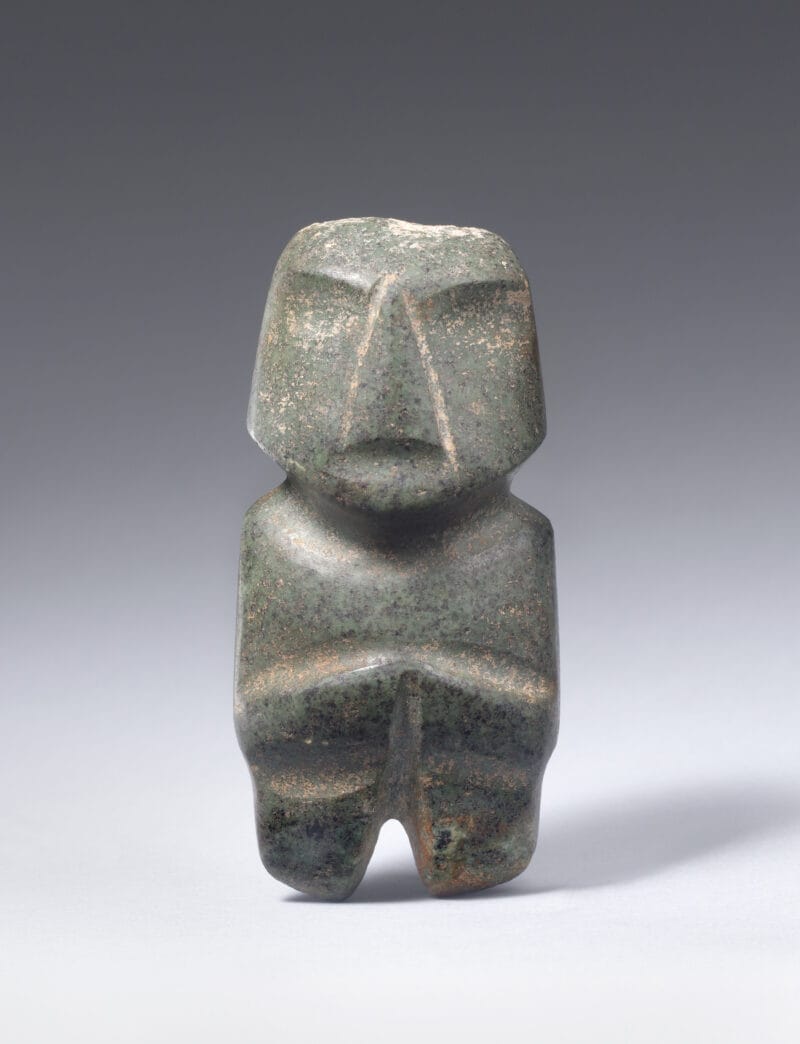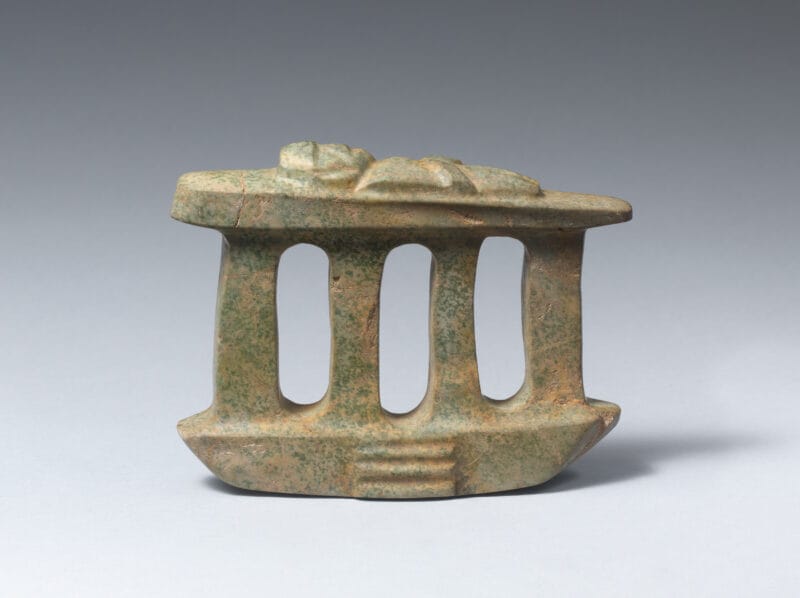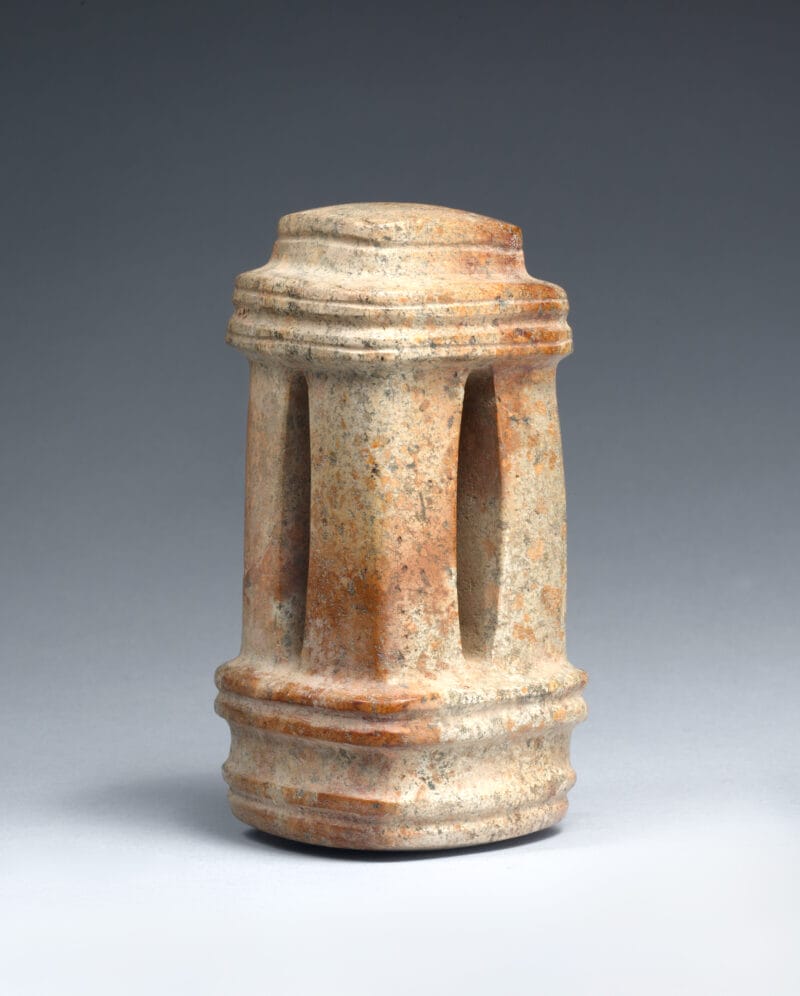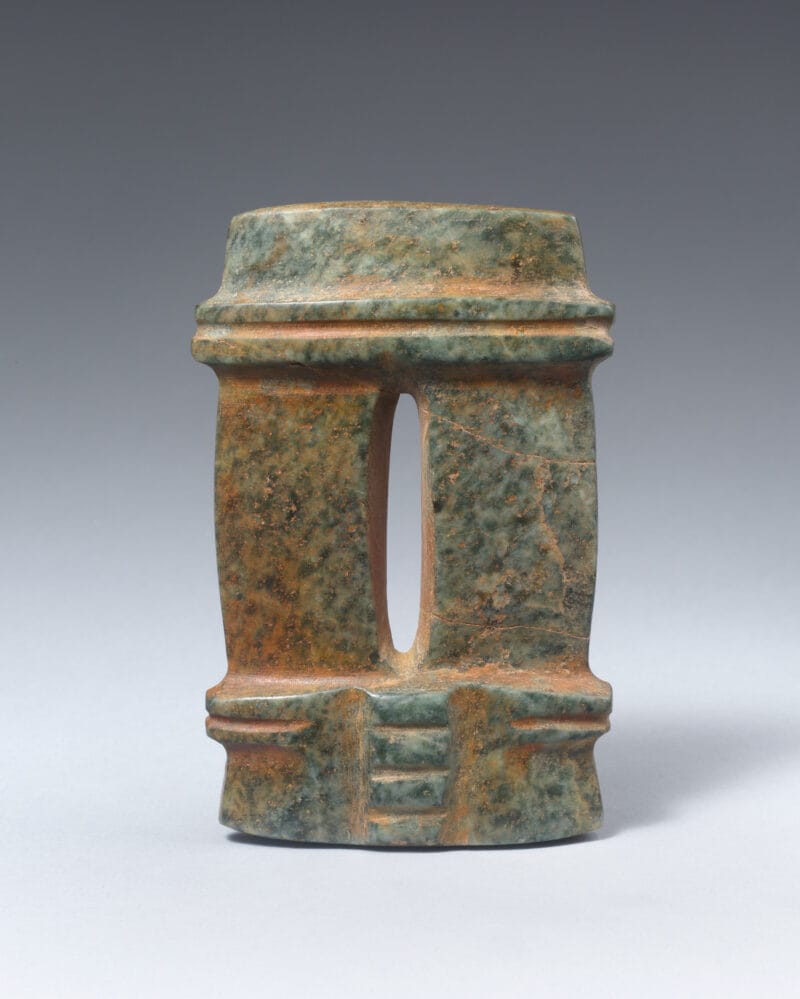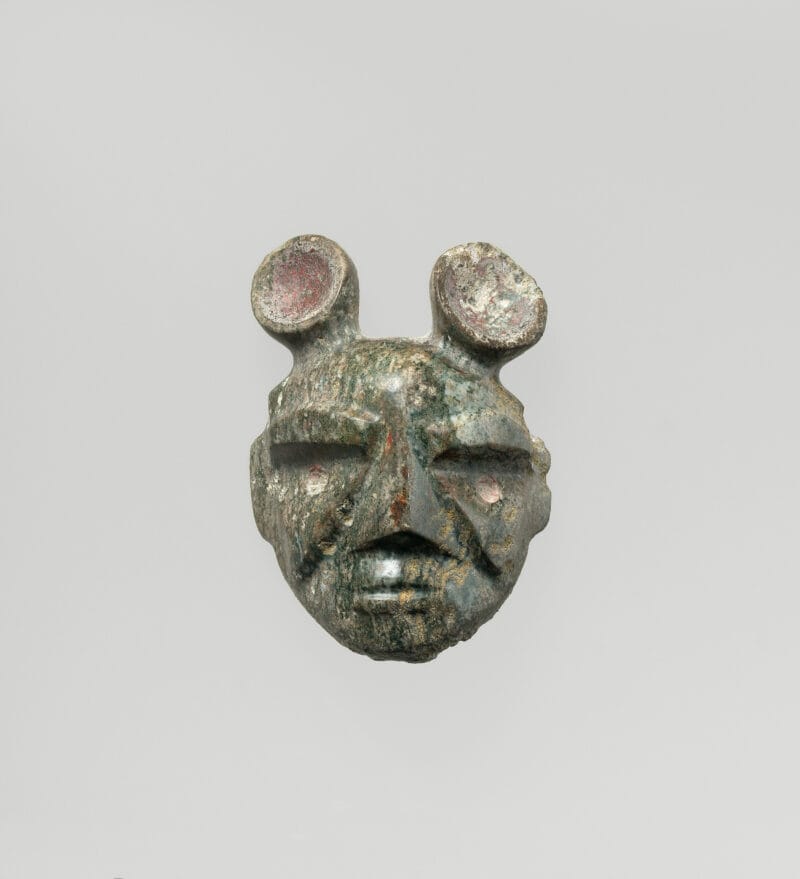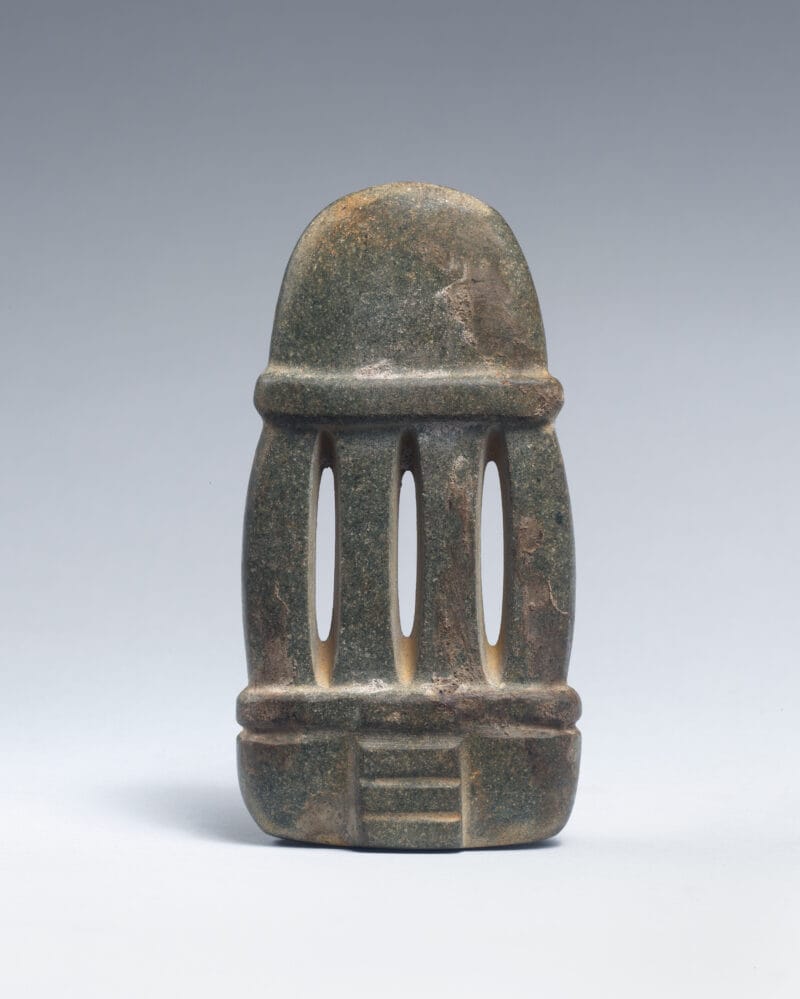
About the Object
Polished and expertly carved from a mottled green stone, perhaps jade, the unknown Mezcala artist(s) fashioned what scholars today call a temple or architectural model. It has three stairs leading up to a platform with four columns cut through the stone. A second platform, capped with a rounded top, rests upon the columns. This was likely associated with ideas of fertility, the cycle of life and death, and rituals associated with rainfall.
Additional Information
Originating in what is today the western Mexican state of Guerrero, the Mezcala tradition is best-known for its abstract human and architectural figures, some of which may also be linked to everyday uses. For instance, the stones carved from between the columns or other “debris” cast off from fashioning these objects could be shaped into arrowheads or other tools.
[Throckmorton Fine Art, New York, NY];
Related Objects
You may also be interested in
Graywolf Press

Architect James Leng designs birdhouse for Vilcek Foundation Rooftop
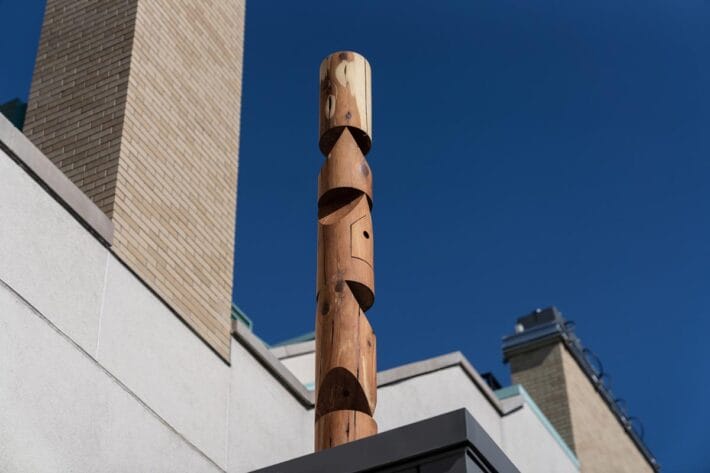
Felipe Baeza

